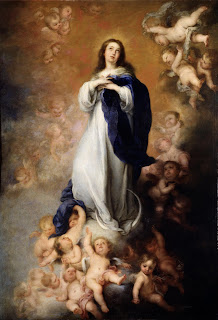 |
| St. Patrick's Day postcard, 1911. Curt Teich Co postcard, G1428 |
There are at least ten place names in Lake County attributed to the Irish.
Some of the earliest Irish place names were surnames given to an area by settlers. Meehan's Settlement, for example, was located in today's West Deerfield Township along Telegraph Road, approximately one-mile south of Everett. In 1835, the location was settled by Michael Meehan (1808-1892) and his wife Bridget (nee Monahan), from County Meath, Ireland.
Dulanty was located on Greenbay Road on the Shields-Deerfield Township line (and sometimes referred to as an early name for Lake Bluff). In 1837, Michael Dulanty (1799-1886) and his wife Ellen (nee Armstrong), arrived from County Tipperary, Ireland. They established a stage relay station and tavern known as the Centerville Inn or Dulanty's.
The area became officially known as Dulanty in 1846, when the post office took that name. It was common for post offices to be named for the postmaster, since the post office was located in their home or place of business.
Leahy Hill in Newport Township is located south of Wadsworth Road and east of Cashmore Road. It was named after the Leahy family, Irish settlers, who owned the land.
The place name Kennedy appears to have been used in southern Shields Township in the area where Irish immigrant, John Kennedy, settled.
Two locales in Lake County were named for the high percentage of Irish who settled there: Irish Hills in Newport Township, and Ireland in Libertyville/Vernon Townships. Irish Hills was named for the settlers and the hilly topography in the area west of Route 41 along Route 173; and Ireland was the region east of and adjacent to the Des Plaines River. These names were commonly used in the late 19th and early 20th centuries.
Though Killarney Lake no longer exists, the name suggests an Irish connection. The "lake" was a marshy area once located in Antioch Township, west of Fox Lake, in Section 35. The area was most likely drained for development and farming.
The only Irish-influenced place names still in use are O'Plaine and Blarney Island. O'Plaine is derived from Aux Plains River, an early appellation of the Des Plaines River. Irish settlers reportedly changed the spelling of Aux Plains to O'Plain, and through the 1870s, the river was listed on maps as the O'Plain River. Today, the name is preserved in O'Plaine Road, with the addition of an "e" on the end.
Blarney Island was named by Irish immigrant, Jack O'Connor, who took over the famous bar on Grassy Lake in the 1920s.
The most anecdotal of the county's Irish place names is Codfish Town. This name described an Irish settlement in Lake Forest near Washington Road. The name seems to have originated in the mid to late 1800s from the smell of codfish cooking on Friday evenings. Residents in the area were also referred to as "codfishers."
Some of the earliest Irish place names were surnames given to an area by settlers. Meehan's Settlement, for example, was located in today's West Deerfield Township along Telegraph Road, approximately one-mile south of Everett. In 1835, the location was settled by Michael Meehan (1808-1892) and his wife Bridget (nee Monahan), from County Meath, Ireland.
Dulanty was located on Greenbay Road on the Shields-Deerfield Township line (and sometimes referred to as an early name for Lake Bluff). In 1837, Michael Dulanty (1799-1886) and his wife Ellen (nee Armstrong), arrived from County Tipperary, Ireland. They established a stage relay station and tavern known as the Centerville Inn or Dulanty's.
The area became officially known as Dulanty in 1846, when the post office took that name. It was common for post offices to be named for the postmaster, since the post office was located in their home or place of business.
Leahy Hill in Newport Township is located south of Wadsworth Road and east of Cashmore Road. It was named after the Leahy family, Irish settlers, who owned the land.
The place name Kennedy appears to have been used in southern Shields Township in the area where Irish immigrant, John Kennedy, settled.
Two locales in Lake County were named for the high percentage of Irish who settled there: Irish Hills in Newport Township, and Ireland in Libertyville/Vernon Townships. Irish Hills was named for the settlers and the hilly topography in the area west of Route 41 along Route 173; and Ireland was the region east of and adjacent to the Des Plaines River. These names were commonly used in the late 19th and early 20th centuries.
Though Killarney Lake no longer exists, the name suggests an Irish connection. The "lake" was a marshy area once located in Antioch Township, west of Fox Lake, in Section 35. The area was most likely drained for development and farming.
The only Irish-influenced place names still in use are O'Plaine and Blarney Island. O'Plaine is derived from Aux Plains River, an early appellation of the Des Plaines River. Irish settlers reportedly changed the spelling of Aux Plains to O'Plain, and through the 1870s, the river was listed on maps as the O'Plain River. Today, the name is preserved in O'Plaine Road, with the addition of an "e" on the end.
Blarney Island was named by Irish immigrant, Jack O'Connor, who took over the famous bar on Grassy Lake in the 1920s.
 |
| St. Patrick's Day postcard, 1908. Curt Teich Co postcard G4296. |








